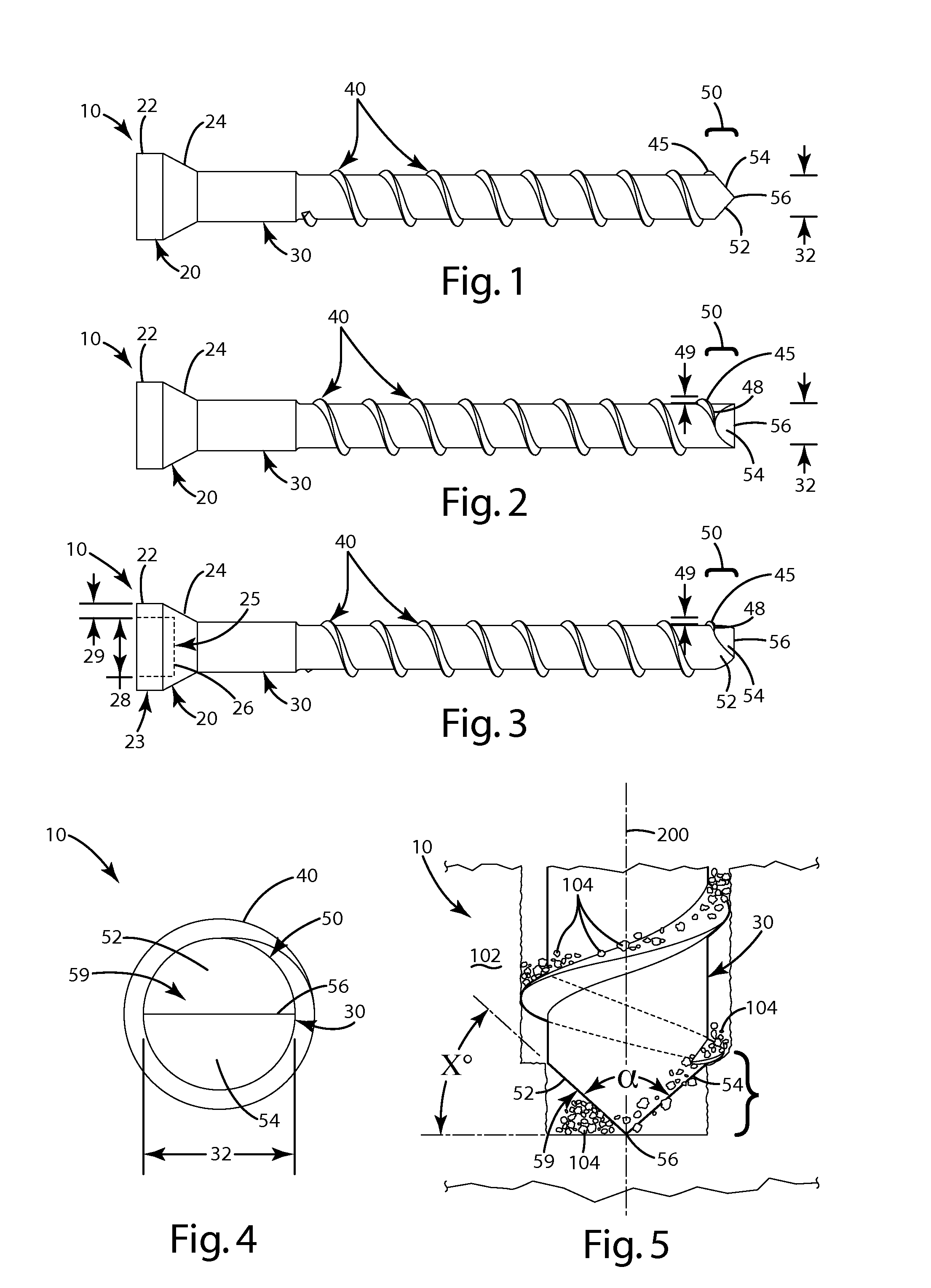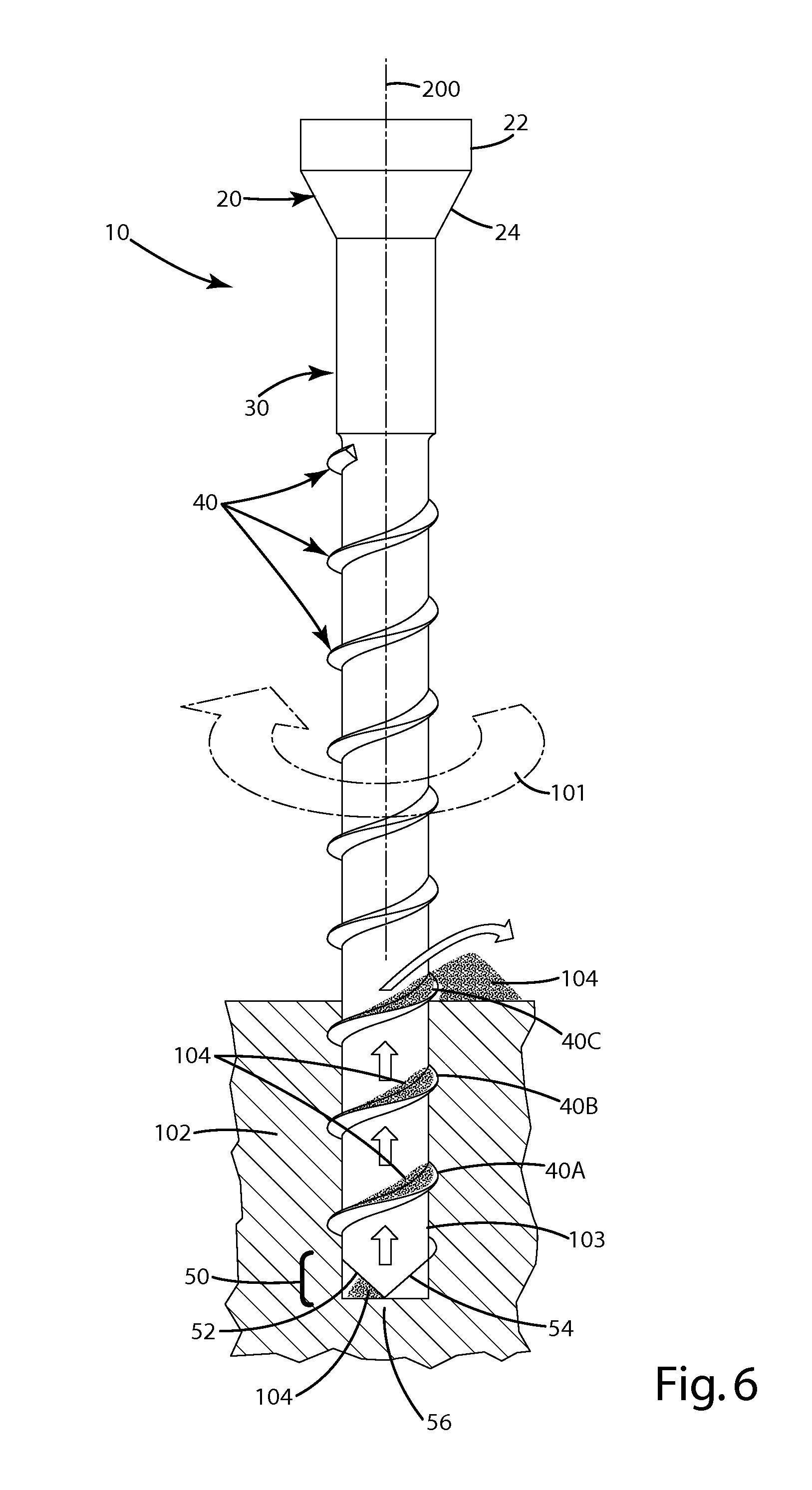Fastener, installation tool and related method of use
a technology of installation tools and fasteners, applied in the field of fasteners, can solve the problems of splintering of the lower corner of the board from the rest of the board, cutting or drilling into the wood, and the “side angled screws” are relatively unnoticed by an observer looking straight down at the boards, so as to achieve the effect of convenient and consistent us
- Summary
- Abstract
- Description
- Claims
- Application Information
AI Technical Summary
Benefits of technology
Problems solved by technology
Method used
Image
Examples
embodiment
VI. Second Alternative Tool Embodiment
[0180]A second alternative embodiment of the fastener installation tool is illustrated in FIGS. 27-30 and generally designated 460. The installation tool shown there is similar in construction and operation to the embodiments described above with several exceptions.
[0181]As shown in FIG. 27, the fastener installation tool 460 includes a handle 461 joined with a frame 462. The frame is joined with a first fastener guide 480 and a second fastener guide 580. A secondary handle 464 is operably joined to the frame 462 and a biasing element 466, as well as the first fastener guide 480. The secondary handle and biasing element 466 are adapted to move the first fastener guide 480 as described below.
[0182]Turning to FIGS. 27 and 31, the guides 480 and 580 are generally identical except reversed at opposite ends of the frame 462. Because the first and second guides are identical but simply reversed at opposite ends of the frame, only the first guide will ...
PUM
| Property | Measurement | Unit |
|---|---|---|
| angle | aaaaa | aaaaa |
| acute angle | aaaaa | aaaaa |
| acute angle | aaaaa | aaaaa |
Abstract
Description
Claims
Application Information
 Login to View More
Login to View More - R&D
- Intellectual Property
- Life Sciences
- Materials
- Tech Scout
- Unparalleled Data Quality
- Higher Quality Content
- 60% Fewer Hallucinations
Browse by: Latest US Patents, China's latest patents, Technical Efficacy Thesaurus, Application Domain, Technology Topic, Popular Technical Reports.
© 2025 PatSnap. All rights reserved.Legal|Privacy policy|Modern Slavery Act Transparency Statement|Sitemap|About US| Contact US: help@patsnap.com



